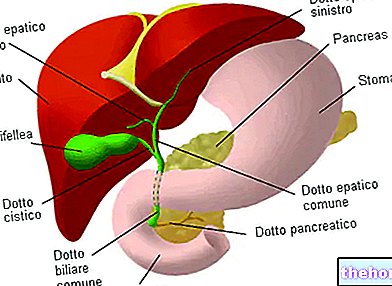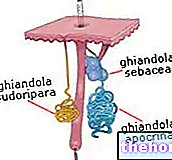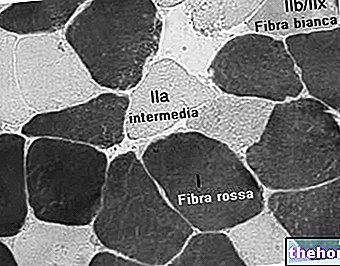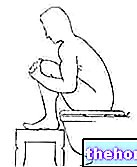Bone is a connective tissue specialized for the support function. It consists of a very hard, mineralized extracellular matrix and a component of cells, called osteocytes. The matrix, rich in calcium, forms a complex three-dimensional network that encloses all "inside of small holes the same cells that produced it."
EXTRACELLULAR MATRIX, also called bone matrix or intracellular matrix
Like all types of connective tissue, the extracellular matrix is made up of an amorphous component (it lacks its own shape), very small and essentially proteoglycan in nature, and an abundant fibrous component, consisting mainly of type I collagen fibers.

Within the bone tissue and the extracellular matrix itself we can recognize organic (30-35%) and extraorganic (65-70%) components. The organic components are often enclosed under the single term ossein.
Collagen fibers are responsible for bone flexibility,
while the inorganic fraction is associated with their hardness.
ORGANIC COMPONENTS OF THE MATRIX
Among the organic components we remember, in addition to collagen, proteoglycans, some non-collagenic proteins, cytokines and growth factors. The most abundant element is type I collagen, which is organized into fibers, which act as a support (matrix) for the sedimentation of salts during the mineralization process. The other protein components (osteocalcin, osteonectin, osteopontin) have the function to modulate this process of formation, mineralization and adhesion between the cells and the bone matrix.
As mentioned, collagen fibers do not arrange themselves randomly, but line up in a regular manner, giving rise to an organic matrix known as an osteone.
The osteone gives the bones considerable strength and compactness (it is said that the bone has a lamellar structure, see below).
Collagen, like the other components of the organic matrix, is secreted by osteoblasts.
INORGANIC COMPONENTS OF THE BONE TISSUE
Among the inorganic components we recognize minerals such as calcium, phosphorus, fluorine and magnesium, which give the bones the characteristic hardness, well known to all.
Calcium is found as calcium diphosphate, deposited in the form of crystals similar to hydroxyapatite and anchored on a fibrous collagen support.
The hydroxyapatite crystals arrange themselves along the collagen fibers in an orderly fashion.
There are also other salts, such as calcium carbonate (component of marble) and traces of magnesium phosphate and calcium fluoride (also important in teeth).
The presence of minerals gives the bones a degree of hardness lower only than that of enamel.
FUNCTIONAL CORRELATIONS and CHARACTERISTICS OF THE BONE TISSUE
The presence of minerals, as well as the abundance and particular distribution of collagen fibers, gives the bone outstanding mechanical properties of hardness and resistance to pressure, traction and torsion. Particularly:
collagen gives the bones a certain degree of elasticity, which results in a considerable resistance to traction (elongation), that is to a load that is distributed along its longitudinal axis.
The mineral component of the bone gives the tissue hardness, rigidity and a certain resistance to compression forces.
Other articles on "Bone and bone tissue"
- bones of the human body
- bone
- osteoblasts osteoclasts
- spongy bone compact bone
- periosteum endosteum
- bone marrow
- bone remodeling
- bone mass
- height growth
- joints
- Joints: anatomy structure
















.jpg)











